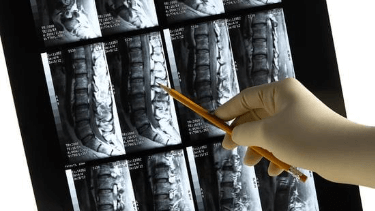Fighting spinal cord injuries and Parkinson's with electronic implants

Sponsored by

Sponsored by

Researchers are now a step closer to diagnosing and treating a range of spinal injuries and chronic diseases through advanced flexible electronic implants, thanks to collaboration between Griffith University and University of New South Wales (UNSW).
This pioneering project was led by Dr Tuan-Khoa Nguyen, Professor Nam-Trung Nguyen and Dr Haong-Phuong Phan from Griffith University’s Queensland Micro- and Nanotechnology Centre (QMNC), which houses part of the Queensland node of the Australian National Nanofabrication Facility (ANFF-Q).
The combined knowledge and expertise of the QMNC and ANFF-Q was brought to bear to solve the challenge of creating implants that were slim, flexible and strong enough to be safely implanted within the body.
Dr Phan explained: ‘Traditional implants are bulky and have a different mechanical stiffness from human tissue that poses potential risks to patients. The development of mechanically soft but chemically strong electronic devices is the key solution to this long-standing problem.’
But while the roadblocks to developing such implants were great, so too were the potential rewards.
‘Implantable and flexible devices have enormous potential to treat chronic diseases such as Parkinson’s disease and injuries to the spinal cord,’ Dr Tuan-Khoa Nguyen said. ‘These devices allow for direct diagnosis of disorders in internal organs and provide suitable therapies and treatments. For instance, such devices can offer electrical stimulations to targeted nerves to regulate abnormal impulses and restore body functions.’
The research team proved up to the task, harnessing QMNC’s and ANFF-Q's scalable manufacturing capability and advanced characterisation facilities for robust micro- and nanobioelectric devices.
They deployed wide-bandgap semiconductors, which have electronic properties that lie between non-conducting materials, such as glass, and semi-conducting materials, such as the silicon that’s used for computer chips. This would make the devices able to operate at extreme conductions, such as those found within the human body.
‘The system consists of silicon carbide nanomembranes as the contact surface and silicon dioxide as the protective encapsulation, showing unrivalled stability and maintaining its functionality in biofluids,’ Professor Nam-Trum Ngyun said.
The team’s innovative approach has opened up a range of promising avenues for both neuroscience research and neural stimulation therapies, potentially offering life-saving treatment for chronic neurological diseases, as well as improving patient recovery.
‘To make this platform a reality, we are fortunate to have a strong multidisciplinary research team from Griffith University, UNSW, University of Queensland, Japan Science and Technology Agency (JST) – ERATO, with each bringing their expertise in material science, mechanical/electrical engineering, and biomedical engineering,’ Dr Phan said.